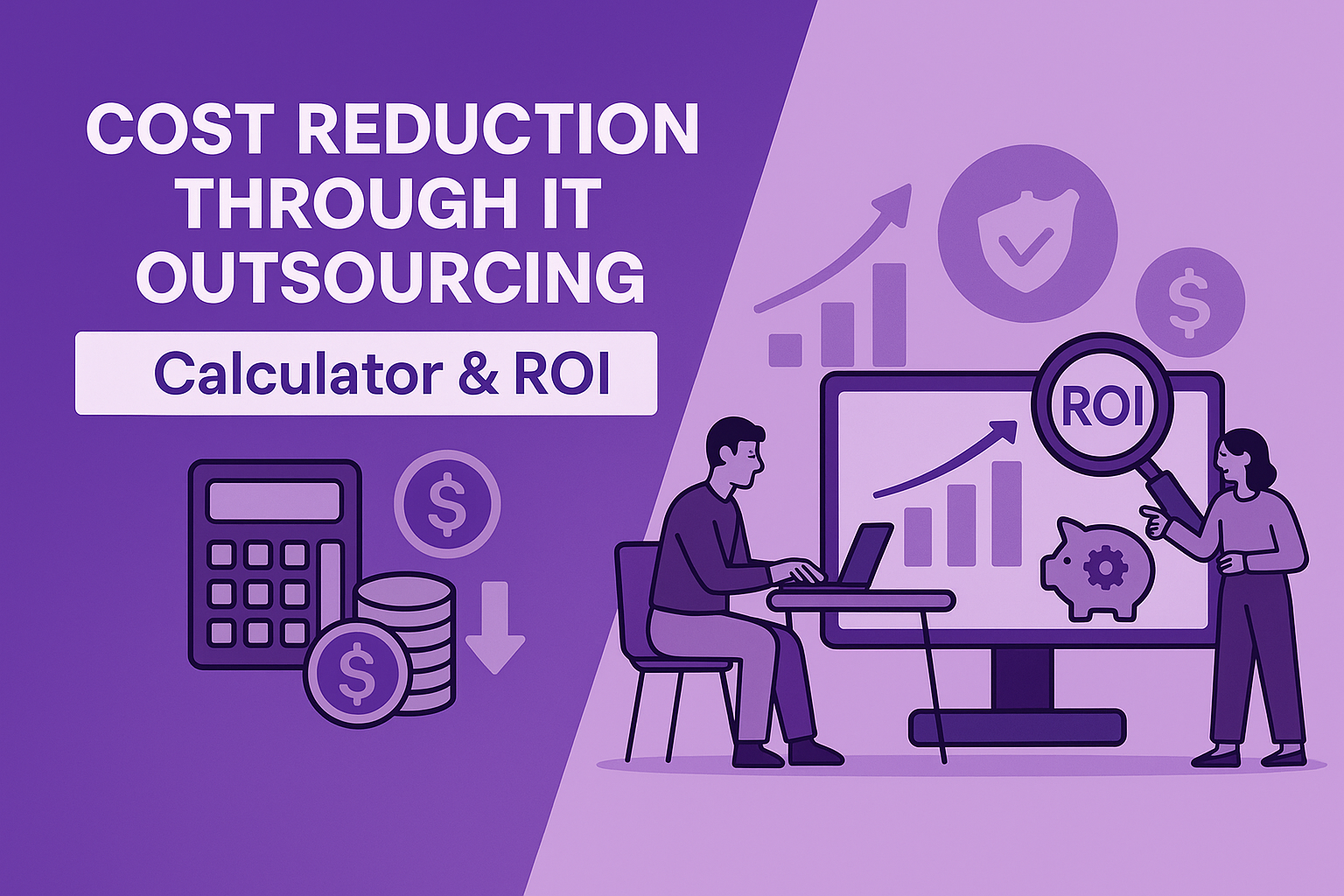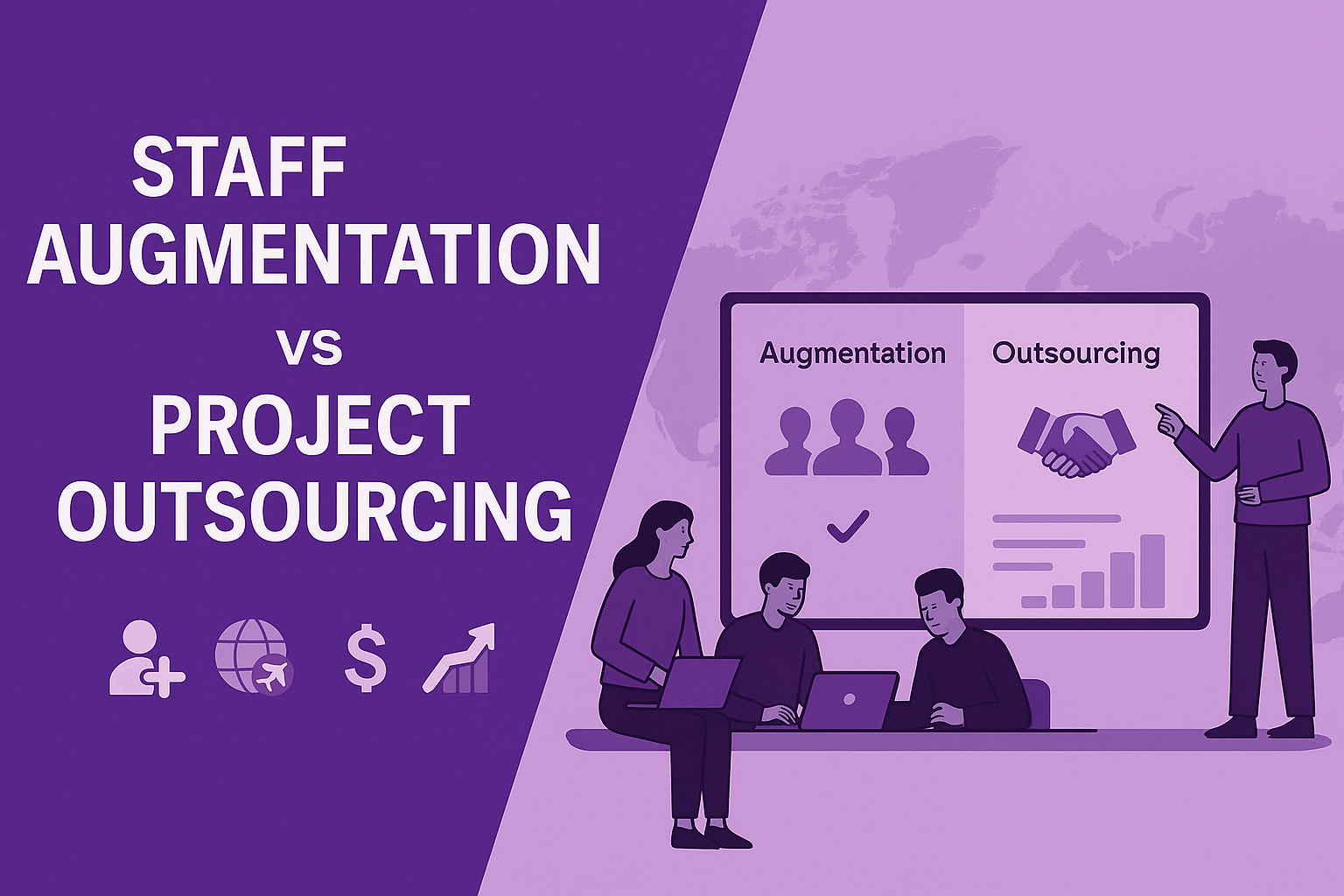IT outsourcing cost savings represent one of the most compelling reasons why companies choose external technology partners. Recent market analysis shows that organizations typically achieve 25-60% cost reduction compared to maintaining equivalent internal capabilities, with average annual savings reaching significant six-figure amounts for mid-sized enterprises. This comprehensive guide provides practical frameworks for calculating potential savings and measuring IT outsourcing ROI to support informed decision-making.
IT outsourcing cost savings represent one of the most compelling reasons why companies choose external technology partners. Recent market analysis shows that organizations typically achieve 25-60% cost reduction compared to maintaining equivalent internal capabilities, with average annual savings reaching significant six-figure amounts for mid-sized enterprises. This comprehensive guide provides practical frameworks for calculating potential savings and measuring IT outsourcing ROI to support informed decision-making.
What are the primary sources of IT outsourcing cost savings?
IT outsourcing cost savings derive from multiple interconnected factors that collectively create substantial financial advantages for organizations. Understanding these cost components helps businesses accurately project potential savings and develop realistic ROI expectations.
Labor Cost Optimization represents the largest component of savings. Offshore arrangements typically reduce labor costs by 50-70%, while nearshore options provide 30-50% savings compared to domestic hiring. Eastern European markets like Bulgaria offer particularly attractive value propositions, combining skilled workforces with competitive cost structures that help organizations reduce IT costs significantly.
Infrastructure Elimination removes substantial capital expenditures. Companies avoid hardware purchases, software licensing fees, facility costs, and ongoing maintenance expenses. These infrastructure savings often represent 20-30% of total IT budgets for organizations maintaining on-premises systems.
Operational Efficiency Gains emerge through standardized processes and automation. Specialized providers achieve economies of scale that translate to lower per-unit service costs while maintaining or improving quality levels. These efficiencies help reduce IT costs across multiple operational areas.
How do you calculate potential IT outsourcing cost savings?
Calculating accurate IT outsourcing cost savings requires comprehensive analysis of current expenses versus projected outsourcing costs. This calculation framework helps organizations develop realistic expectations and measure actual performance against projections.
Cost Savings Calculator Framework
Step 1: Current IT Cost Analysis
- Total annual salaries (including benefits: typically 30-50% of base salary)
- Infrastructure costs (hardware, software licenses, facilities)
- Training and recruitment expenses
- Management overhead (typically 15-25% of team costs)
Step 2: Outsourcing Cost Projection
- Provider service fees (hourly rates or project costs)
- Management and coordination overhead
- Transition and ongoing relationship management expenses
Step 3: Net Savings CalculationTotal Current Costs - Total Outsourcing Costs = Annual IT Outsourcing Cost Savings
Example Calculation:A company with 10 internal developers (average $85,000 salary + 40% benefits = $119,000 each) spends $1.19 million annually on salaries alone. Adding infrastructure and operational costs brings total expenses to approximately $1.5 million.
Equivalent offshore development team costs: $600,000-750,000 annually
Potential annual savings: $600,000-900,000
What factors impact IT outsourcing ROI calculations?
IT outsourcing ROI extends beyond simple cost comparisons to include productivity improvements, risk mitigation, and strategic value creation. Comprehensive ROI analysis captures both quantitative savings and qualitative benefits that contribute to long-term business success.
Productivity Multipliers significantly enhance ROI calculations. Access to specialized expertise often accelerates project delivery by 30-40%, reducing time-to-market for new products and features. These productivity gains create additional revenue opportunities that amplify the financial benefits of cost reduction initiatives.
Risk Mitigation Value includes reduced recruitment risks, technology obsolescence protection, and compliance assurance. The cost of a failed internal hire can reach 150-200% of annual salary when including recruitment, training, and replacement expenses.
Strategic Value Creation encompasses improved focus on core business activities, access to cutting-edge technologies, and enhanced scalability. While harder to quantify, these strategic benefits often exceed direct cost savings in long-term value creation.
Quality Improvements through specialized expertise can reduce defect rates, improve customer satisfaction, and decrease maintenance costs. These quality enhancements contribute to positive IT outsourcing ROI through reduced operational expenses and improved business outcomes.
How quickly do organizations realize IT outsourcing cost savings?
The timeline for realizing IT outsourcing cost savings varies based on engagement model, transition complexity, and service scope. Understanding typical realization timelines helps organizations set appropriate expectations and measure progress effectively.
Immediate Savings (1-3 months): Direct labor cost reductions begin immediately upon engagement. Organizations start seeing reduced payroll expenses, eliminated recruitment costs, and decreased infrastructure maintenance requirements.
Long-term Value (6-18 months): Strategic advantages manifest through improved agility, enhanced capabilities, and sustained operational improvements. IT outsourcing ROI reaches full potential as partnerships deliver comprehensive value beyond cost savings.
Companies implementing dedicated development teams or staff augmentation services typically see measurable cost benefits within the first quarter, with full ROI realization within 12-18 months.
What are common ROI measurement mistakes to avoid?
Accurate IT outsourcing ROI measurement requires avoiding common calculation errors that can lead to unrealistic expectations or poor decision-making. Understanding these pitfalls helps organizations develop more accurate financial projections and success metrics.
Incomplete Cost Analysis represents the most frequent error. Organizations often forget to include hidden internal costs such as management overhead, training expenses, benefits, and infrastructure maintenance. Comprehensive cost analysis should capture total cost of ownership for accurate comparisons.
Ignoring Transition Costs can significantly impact short-term ROI calculations. Initial setup expenses, knowledge transfer costs, and temporary productivity decreases should be factored into financial projections to avoid unrealistic expectations.
Overlooking Quality Benefits leads to undervaluing outsourcing partnerships. Improved code quality, reduced defect rates, and enhanced security measures provide tangible financial benefits that should be included in ROI calculations.
Short-term Focus fails to capture the full value proposition. While immediate cost savings are important, the strategic advantages and long-term value creation often exceed initial financial benefits. For a comprehensive understanding of all advantages, review our complete guide to IT outsourcing benefits.
How do different outsourcing models affect cost savings?
Various outsourcing models offer different cost structures and savings potentials. Selecting the optimal model based on specific requirements and constraints helps maximize IT outsourcing cost savings while meeting operational objectives.
Offshore Outsourcing provides maximum cost reduction potential, typically achieving 50-70% savings compared to domestic alternatives. However, organizations must consider communication challenges, time zone differences, and cultural factors when evaluating total value.
Nearshore Partnerships offer balanced cost savings (30-50%) while maintaining geographic proximity and cultural alignment. Countries like Bulgaria provide excellent nearshore options with competitive advantages for European companies.
Hybrid Models combine internal resources with external expertise to optimize costs while maintaining control over critical functions. This approach allows organizations to reduce IT costs selectively while retaining core capabilities internally.
Project-based vs. Long-term Partnerships affect cost structures differently. While project-based engagements may offer lower initial costs, long-term partnerships typically provide better IT outsourcing ROI through relationship maturity and process optimization.
Conclusion: Maximizing Cost Reduction Through Strategic IT Outsourcing
IT outsourcing cost savings represent a compelling business opportunity for organizations seeking to optimize their technology investments while enhancing operational capabilities. With potential savings ranging from 25-60% of current IT expenses, outsourcing provides immediate financial benefits alongside strategic advantages.
Successful cost reduction requires comprehensive analysis, realistic ROI projections, and careful provider selection. Organizations that understand the complete cost structure, measure results accurately, and maintain focus on long-term value creation consistently achieve superior IT outsourcing ROI outcomes.
Ready to calculate your potential savings and explore cost-effective IT outsourcing solutions? Cleverix offers comprehensive IT outsourcing services with transparent pricing and proven cost reduction results. Our Bulgaria-based team provides European quality standards at competitive rates, helping organizations reduce IT costs while accessing world-class expertise. Contact us today for a personalized cost analysis and ROI projection.





